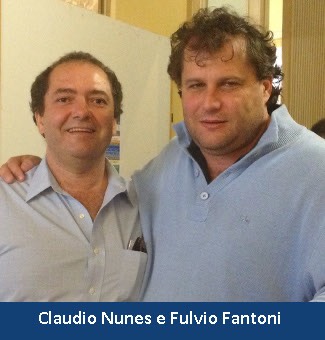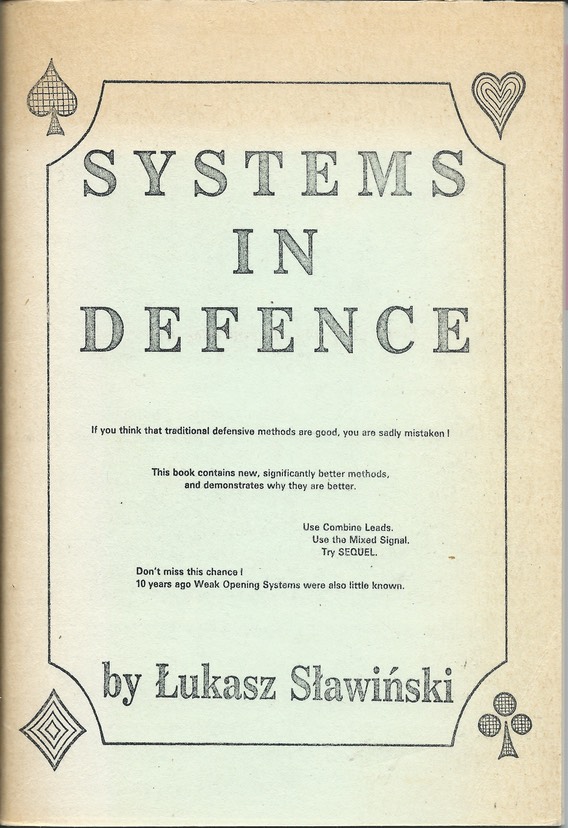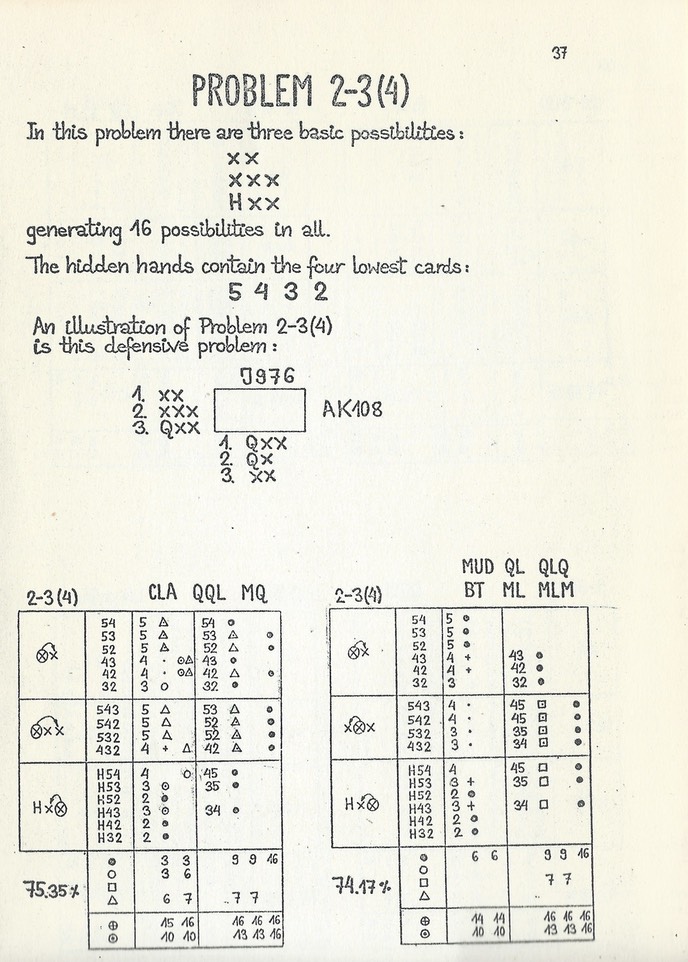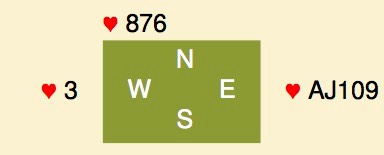Two weeks ago, the CAS (Court of Arbitration for Sport) overturned the decision by the EBL in the case of Fulvio Fantoni and Claudio Nunes.  Messrs. Fantoni and Nunes (usually called by their nickname Fantunes) were accused of transferring information about the suit led using the placement of the cards. Basically, a horizontally placed card showed one holding, a vertically placed one another. The whole thing was discovered in 2015 after studying video recordings of important matches. The full verdict is available online (click here). Note that the CAS did not say that Fantunes were innocent, they only said that the EBL did not prove to the “comfortable satisfaction” of the panel that Fantunes used illegal methods. “Comfortable satisfaction” is the equivalent of “reasonable doubt” used in many jurisdictions. And, as the basic principle of “not guilty until proven otherwise” applies, this means that the decision could not stand.
Messrs. Fantoni and Nunes (usually called by their nickname Fantunes) were accused of transferring information about the suit led using the placement of the cards. Basically, a horizontally placed card showed one holding, a vertically placed one another. The whole thing was discovered in 2015 after studying video recordings of important matches. The full verdict is available online (click here). Note that the CAS did not say that Fantunes were innocent, they only said that the EBL did not prove to the “comfortable satisfaction” of the panel that Fantunes used illegal methods. “Comfortable satisfaction” is the equivalent of “reasonable doubt” used in many jurisdictions. And, as the basic principle of “not guilty until proven otherwise” applies, this means that the decision could not stand.
The CAS is the supreme court for sport matters, so this decision is final, though not the end of the matter. No doubt Fantunes will claim damages, as they could not play and get paid a comfortable salary for the last 2 years and their reputation is destroyed regardless of what is decided by which court.
Obviously, I downloaded and read the full decision. Or rather, I’m still studying it, as it is some 40 pages of legalise that is not easy to digest. While most people know that Fantunes play an highly artificial system, with forcing opening bids and special 2 bids, people do not realize that they also play an ususual system of opening leads, which they call “Slavinski leads”. And, one of the things that I noticed in both the decision but also the follow-up discussion on the Internet, was that nobody seems to understand this code. In fact, one of the experts called by the EBL, Dutch player Bas Drijver, stated that “… he was not an expert in Slavinksi system”. You’d not expect this from an expert witness, in particular one with a law degree.
OK, so time for a crash course on Slawinski leads.
Slawinski leads is a system of opening leads invented in the late 1970’s by the Polish player and bridge theoriitician Lukasz Slawinski (occasionally also spelled as Slavinski). I actually have no idea if he is still alive. There is no bio anywhere in a language that I or google translate understands. There are entries on various bridge sites listing him as an author (or somebody with the same name), but this material is several years old. If you have more details, please contact me.

Regardless of this, lots of his work in the 1970’s was on forcing pass systems. Later on, he turned his attention to opening leads and signals as well, resulting in the development of the COMBINE system of opening leads. Slawinski first published about his system of opening leads in 1976 in Polish book. Later, he published 2 updates (1979 and 1980), before the book was translated into English by Roman Smolski in 1983, and published under the name “System in defence”. Book is a big word for this material, it is more a collection of typewritten notes that are xeroxed and annotated with a fineliner, then stapled together. I don’t know if printed copies are still available, but there is a scan of the 1983 translation available on the Internet.

Let me start by pointing out that this is not the most readable book in my collection. Strike that, it probably is in the top 10 of the hardest to read and understand books in my collection, as it is essentially a collection of tables merged with a mathematical analysis of the results, with no bridge hands, examples and some guesswork left to the reader as a result of the poor quality of the reproduction.
That said, it is a book about opening leads (and signals), and it follows the usual split: leads with combinations of several honors (AK, KQJ, AJT, whatever) and leads with a small card from holdings such as K654, but also 753 or 62. The latter is the really interesting stuff and also where some of the misunderstandings in the Fantunes case come up.
Now imagine that you are on lead after a simple 1NT-3NT and decide to lead a small card (2, 3, … 9) in one of your suits. Which card do you play?
You are obviously going to tell me that it depends on your holding and that is correct. But, whatever you do, you want to transfer some information with your lead. And that can be:
- Length in the suit led, that is an odd (3, 5) or an even number of cards (2, 4, 6) in the suit, or,
- Quality in the suit led, that is an honor (say K654), or not (say 9654).
Traditionally, players have focussed on either quality or length, leaving it up to partner to guess about the other one in trick 1 if that is relevant, or hope that the situation clarifies itself in trick 2. So, if you prefer to show length and play 3rd and 5th, you lead the 5 from
- K65 or 965, followed by the 6 to show an odd number of cards, and
- K654 or 9654, followed by the 4 to show an even number of cards.
In both cases, you leave it up to partner to figure out if the highest card is the K or the 9. If you prefer attitude leads, you lead:
- the 5 from K65 or K965
- the 9 from 965 or 9654
Leaving it up to partner to figure out the length. Slawinski realized that there is a 3rd possibility. There after all 2 parameters (length and quality), so 4 possible combinations. His system of leads combines them as:
- Odd number with an honor or an even number without. (K65, 9654)
- Even number with an honor or an odd number without. (K965, 965)
This is known as “Mixed Leads”. If you turn this into a full scheme for leads, it is called combine and looks like this:
- From a suit with an honor:
- Hxx, followed by the second lowest card
- Hxxx and then the lowest card on the second rond
- Hxxxx, followed by the second lowest card
- Hxxxxx and then the lowest card
- From a suit with just small cards:
- xx
- xxx or xxxxx, followed by the second card
- xxxx or xxxxxx, followed by the lowest card
- If the top card can be relevant (usually if it is the 10 or 9):
- xxx or xxxxx, followed by the second card
- xxxx or xxxxxx, followed by the lowest card
H stands for honor and could be the A, K or Q.The J can be both a small card or an honor, depending on your hand.
What Fantunes did, was to copy this system without any modification. They changed the name to Slawinski leads in recognition of the person who invented them.
If you have to play against this, this is what you should know. Of course, this will be hard, as it is very unfamiliar to most players.
Does this actually make sense?
The next question is now, of course, if this method is better than the methods that we have used in the past.
That question is not easy to answer. You can look at individual hands but that is not going to say much. What you need to do, is to look at specific situations, go through all the combination of small cards, see which one is led and determine if the third hand can figure out the position in trick one, or in trick 2. That depends on the actual order in which spot cards are played using whatever methods one uses for leading spot cards. Finally, one can compare the results for various methods.

A typical example. The ♥3 is led and you play old-fashioned 4th best and MUD. The lead can be from ♥532, ♥432, ♥H53, ♥H43 or ♥H543 which is not very helpful when having to decide to continue the suit or not. Using combine as above, the lead can only be from ♥H53, ♥H43, ♥H532, ♥H432 which is a lot more helpful. Using another method (say 3rd and 5th), one gets different results.
Having gone through a large number of possible layouts, one can then calculate an overall efficiency for all methods of leading small cards.
Not unexpectedly, the combine system comes out on top, the claim is that in 79.56% of the cases, one can work out length and honor location in the first 2 tricks. This has to be compared to, for example, 74.40% for 3rd/5th leads, or 72.50% for MUD and 4th best.
So, yes, based on these analysis and assuming that the work of the author is correct, the combine leads are superior to other methods.
Of course, one has to downplay this a bit.
First, the assumption is that the length in the suit led is always known within 2 cards. That might be true against the auction 1NT-3NT, but what about other auctions where much less is known about declarer’s hand. Consider the auction 1♥-2♥-4♥, opener can have almost any distribution.
Then, the efficiencies are based on the assumption that the opening leader will have 2 to 6 cards in the suit led. Singletons look important to me to and I cannot quite see how they are put into the results.The same goes for 7 card suits.
Finally, I am not sure how to interpret the differences. A 5% difference between Combine and "3rd and 5th" sounds like a lot, but how does that translate to actual play? What also hasn’t been factored in, are clues from the auction or the other suits.
And, of course, all this also assumes that all calculations have been done correctly. As not all intermediate results are readily available, this is hard to check. Note that almost everything was done well before PC’s were common.
And what about Fantunes?
Finally, would the FN method of placing cards on the table help here? Remember that they allegedly placed the opening lead horizontally on the table if the suit was headed by the a top honor, and vertically if not.
The answer to that one is simple: yes. Why? The first lead of a suit can usually be on 2 distint holdings, for example the ♥2 is lead from both ♥K32 and ♥32. The ambiguity will be solved in trick 2, but an illegal signal to show that one has a honor or not, moves that to trick one and that is obviously a big advantage for the defence.
More general: there are 4 possibilities. The card led shows 2 of them, the placement of the card which of the 2 applies.
